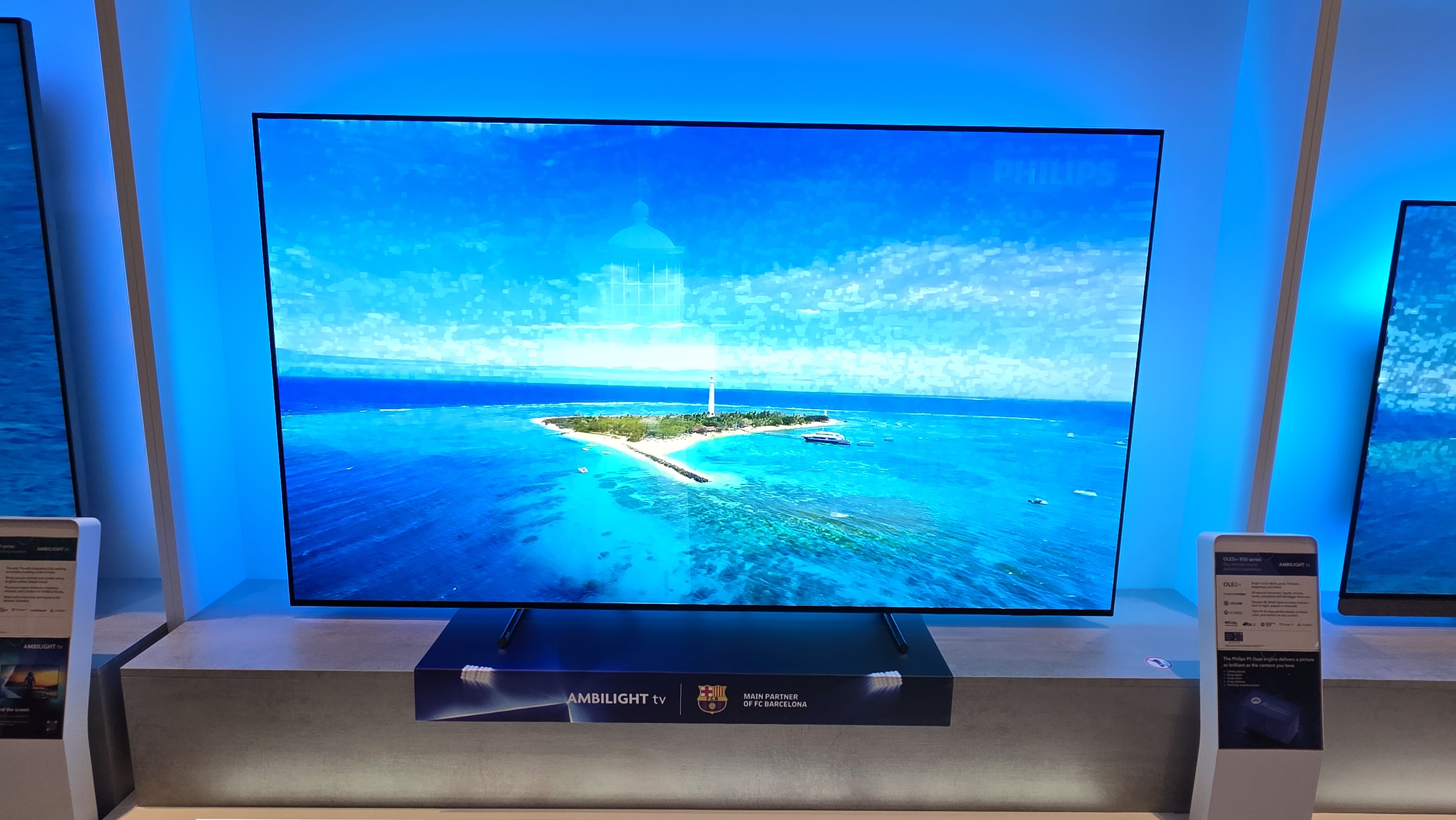
OLED TVs are coming on leaps and bounds, with new technologies arriving at a near frenzied pace. Most recently this has been showcased by the arrival of the new Philips OLED950 TV.
The new TV was unveiled (along with the rest of Philips' new OLED TVs, Mini LED sets and soundbars) mere moments ago at a press event in Barcelona, and is set to replace the Philips OLED959 and four-star Philips OLED909 we reviewed last year.
The TV is full of clever next-generation features, including a new META “Technology 3 OLED panel”.
As far as we can tell from our demo at the TV’s launch event the new screen is based on the same 4th Generation OLED panel tech made by LG Display that’s also set to launch on the LG G5 and Panasonic Z95B – which uses a tandem, four-stack panel design to boost brightness levels and colour volume.
There’s also a next-generation version of the Philips Ambilight bias lighting system, plus a wealth of AI-branded picture processing improvements run by a new 9th Gen P5 AI Dual Engine chipset.
Sounds cool? I’m certainly excited. First, because our staff writer Lewis Empson, who is reporting live at the TV’s Barcelona launch event and has had an early look at the set, came away with a positive opening impression (hands-on preview incoming).
Second, because the hardware is incredibly impressive when you look at the performance improvements being quoted. Specifically, the OLED950 will cover 99.5 per cent of the DCI-P3 colour gamut favoured by creatives and run 350 nits brighter than previous models, offering a new 3700-nit peak.
If set up and tuned right, that could lead to palpable picture improvements – though we’ll need to properly test the TV in our review rooms to confirm if that’s actually the case.
But, despite all that, the thing I’m most excited about with the OLED950 is actually something Philips has taken away. Specifically, its redesigned sound system, which ditches the awkward speaker bar that used to be an eyesore (at least to these eyes) on the set's bottom in favour of a sleek new integrated 70W 2.1 sound system.
“What about up-firing speakers and a proper central channel”, you ask?
Meh. That’s right, I say "meh".
I’ve long argued (and been proven right by our experience reviewing flagship sets) that even with a speaker bar or up-firing channels for virtual Dolby Atmos, TV systems generally can’t match the performance you’ll get from even a moderately capable soundbar. This is why in our reviews you’ll often see us recommending buying one of those, even if the TV has a fancy in-built system.
That’s also why I’ve been pleading, usually with Philips and Panasonic, for variants of their flagship OLEDs either with discrete systems, such as the one on the OLED950, that leave enough room to slot a soundbar under the frame without it looking stupid, or no speakers at all. The idea with the latter suggestion being that not having any speaker will let companies reduce the cost of the set, which in turn will let you save and reinvest the difference in a sound system you’ll actually use.
While the complete absence of speakers on Philips' flagship TV remains a pipe dream, I’m still happy to see it has at least reduced the system’s footprint and hope the trend continues.
MORE:
These are the best OLED TVs
We rate the best Dolby Atmos soundbars
Our picks of the best 65-inch TVs







